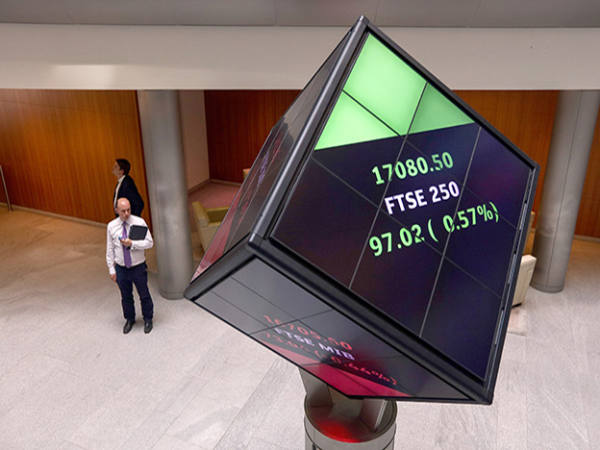- Reorganisation of its capital structure
- A rise in inventories to £12m for “improved operational resilience”
Moonpig’s (MOON) full-year results were greeted by investors with all the enthusiasm of someone receiving a Moonpig greeting card that had been accidently dropped in a puddle, with the shares taking a 10 per cent dive on lower post-pandemic guidance. Why this should come as a surprise is something of a surprise, though the share price is still well ahead of this year’s 350p IPO price. What Moonpig amply illustrates is the consistent investor foible of overpaying for short-term growth, while forgetting the fundamentals of the long-term investment case. As we correctly forecast, the pandemic boost enjoyed by the company, as rival outlets were closed or severely restricted, has started to unwind, which has only made the picture harder to interpret.
Another figure that may have spooked investors was the huge in reported net debt from £28.3m to £115m, though this came below the consensus forecasts. This appears to be largely technical as the company reorganised its capital structure and the company assumed the responsibility for its senior borrowing liabilities from the previous guarantors. The other noteworthy figure was a rise in inventories to £12m for “improved operational resilience” in the face of the pandemic, reflecting the general trend towards stocking provoked by ongoing supply chain fears and lorry driver shortages. This should start to unwind as the situation returns to an imitation of normal over the next few months.
What price growth?
It is worth remembering that even without the pandemic, Moonpig was considered a high-growth company and, while the lockdowns have compressed several years of decent performance into one 12-month timeframe, it is still forecasting revenue growth for next year in the 45-50 per cent range. Unfortunately, that one-off event has made valuing the shares on a current snapshot basis very tricky.
For instance, take the chunky free cash flow yield of 6.93 per cent. In any other circumstances, investors would be delighted with clear evidence that Moonpig’s investment in its business was paying off so handsomely. At that level, the free cashflow (FCF) yield can more than amply cover both the impact of inflation, interest rates payments and the possibility of future dividends. It would also, incidentally, put Moonpig on the radar for growth investors like Terry Smith, who uses a minimum 5 per cent FCF yield as a key investment criterium for his funds. The problem is that many of Moonpig’s newly acquired pandemic customers may simply drift back to buying cards in high street shops and supermarkets – so it is entirely possible that a full percentage point of that yield will disappear organically by next year in proportion with the number of one-off customers who leave, unless Moonpig compensates by ramping up marketing to maintain its momentum, thereby cutting profit margins, or by reducing stocking levels to allow for more cash to flow back to the bottom of the balance sheet.
Ratio tricks
Moonpig is part of the rare aristocracy shares on the entire London market that have a return on capital employed (ROCE) percentage of more than 90 per cent. In fact, according to Refintiv data, it is currently 106 per cent, alongside 13 other companies. Interestingly, although high ROCE rates are usually associated with asset-light tech companies, there is no common theme when ROCE reaches this level; Moonpig stands alongside such diverse businesses as Victorian Plumbing (VIC); China Nonferrous Gold (CNG); and even unloved, perennial turnaround story, newspaper distributor Smiths News (SNWS); the businesses seem to have either low tangible assets, a high value end product, or benefit simply from the valuation trick caused by an uncommonly low share price. If Moonpig can sustain its ROCE over the next year, then investors will know that it has outridden the pandemic effect. One area of concern is that the balance sheet is flashing a current ratio below 1 at 0.98. That could be a technical blip created by the capital restructuring, but it is worth watching for any further lurch lower.
What to do now
The results have clearly rattled many of the investors who bought Moonpig when it topped out at 599p a share and led to a clear over-reaction as the pandemic effect has unwound. While never a cheap share, even at its 350p IPO price, the best that investors can hope for is relative value. If it can at least maintain its underlying operational performance, then any move in cash flow yield above 7 per cent is a clear growth buy signal. One to watch – but we remain neutral for now. Hold.
Last IC view: na
| MOONPIG (MOON) | ||||
| ORD PRICE: | 392p | MARKET VALUE: | £1.3bn | |
| TOUCH: | 388-393p | 12-MONTH HIGH: | 499p | LOW: 355p |
| DIVIDEND YIELD: | NIL | PE RATIO: | 64 | |
| NET ASSET VALUE: | * | NET DEBT: | £115m | |
| Year to 30 Apr | Turnover (£m) | Pre-tax profit (£m) | Earnings per share (p) | Dividend per share (p) |
| 2020 | 173 | 31.8 | na | nil |
| 2021 | 368 | 32.9 | 6.1 | nil |
| % change | +113 | +3 | | |
| Ex-div: | - | |||
| Payment: | - | |||
| *Negative shareholder funds | ||||









